#Scrying
Text
65K notes
·
View notes
Text
🌟 Types of Divination 🌟
🃏 Tarot Reading: Ah, the classic! Shuffle those cards, lay 'em out, and let the symbols tell your story. It's like a psychic storytime with beautifully illustrated cards.
🔮 Crystal Ball Gazing: Channel your inner fortune teller and gaze into the shimmering depths of a crystal ball. See visions, symbols, or just a really fancy paperweight – your call!
☕ Tea Leaf Reading: Sip your cuppa, but don't toss those leaves! The way they settle in your cup can unveil the mysteries of the universe. Get ready to decipher some leafy hieroglyphics.
🖐️ Palmistry (Chiromancy): Study the lines, mounts, and shapes on your palm. Each crease tells a story about your life path, personality, and potential. It's like reading a roadmap to your destiny right on your hand!
🕊️ Feather Divination: Feathers are more than just fashionable accessories for birds! They can carry messages from the spirit world. Find one, meditate on it, and decode its wisdom.
🌀 Runes Casting: Norse warriors used them, and now you can too! Grab some ancient runestones, cast them, and let the runic symbols weave tales of your destiny.
🕯️ Candle Scrying: Light a candle, focus on the flame, and let your visions come to life within the flickering glow.
🌿 Pendulum Magic: Swing that pendulum and ask it some yes-or-no questions. Allow the pendulum to swing freely and always keep your hand still to allow the energy to truly answer you questions.
🌗 Numerology: Numbers, man! They're everywhere, and they've got a lot to say. Discover your life path, destiny, and soul numbers.
🔍 Scrying Mirrors: Stare into the abyss... or, well, a special mirror! Gaze deep, and let the answers reveal themselves.
🌊 Water Scrying: Gaze into the reflective surface of water – be it a pond, a lake, or even a scrying bowl. Watch as ripples reveal the unseen.
🐚 Shell Divination: Channel your inner mermaid! Listen to the whispers of seashells and let them reveal their secrets. You can also collect a handful of different shells and cast them. Their placement, pattern, etc, can reveal important details!
🗝️ Key Casting (Cleidomancy): Gather a collection of old keys, close your eyes, and toss them onto a cloth. The position and arrangement of the keys will unveil symbolic messages or answers to your questions. It's like unlocking the secrets of the cosmos, one key at a time.
🎶 Music Divination (Alectryomancy): Play some tunes and let the lyrics, melodies, or even random song selections speak to you. The songs that resonate can offer messages or insights about your current situation. Let the music be your mystical DJ!
With this ever-growing list of divination methods, you'll have a magical tool for every occasion. Trust your intuition and let your inner seeker explore the mystical world of divination. Happy divining, cosmic explorers! 🔮🌠
#divination#witchcraft#witchy#witchblr#witches of tumblr#tarot#palmistry#tea leaf reading#scrying#runes#sea witch#lunar witch#astrology witch#green witch#kitchen witch#fae witch#forest witch#baby witch#baby witches
2K notes
·
View notes
Text
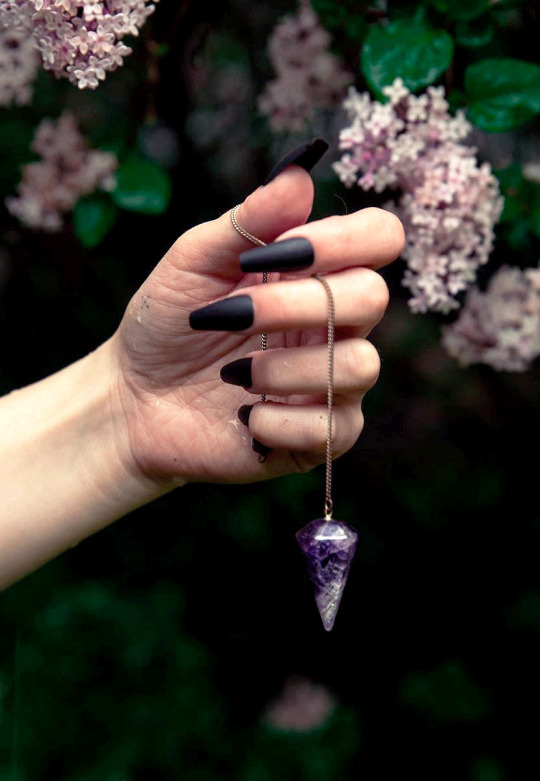

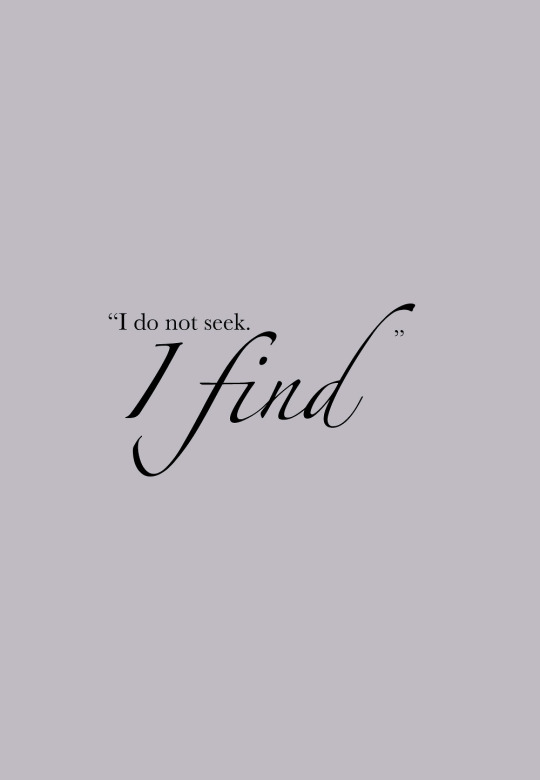
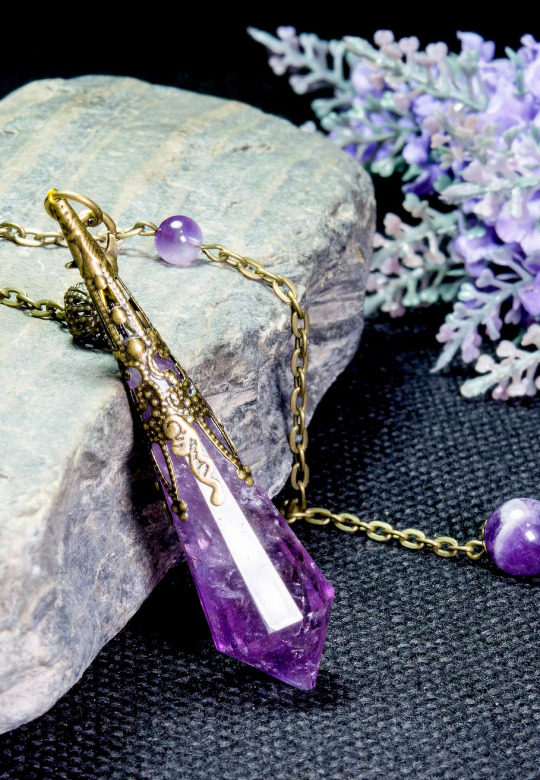
The Evermore Grimoire: Magic Powers
Scrying is a basic witch power to find a being or an object through the use of a crystal and a map. All the witch has to do is hold the crystal pendant over a map of the area where it is thought the lost being or object will be. The more violent and vigorous the swing of the pendant, the closer the witch is to the object on the map coordinates, like a "warm or cold" method of looking for something i.e. the more vigorous the swings the "warmer" one gets to locating what they desire. The pendant will eventually pinpoint a location by pulling down on to a spot on the map after a certain amount of time. For a scry to pinpoint the exact location of something, usually a personal item or even blood of the being in question is needed. Amethyst is said to work best as the most powerful scrying substance as it's believed that it can heavily augment the witches psychic or magical abilities.
583 notes
·
View notes
Text
A parakeet wizard that gets frustrated that every time they try to use their scrying mirror some other parakeet wizard that looks a lot like them shows up and blocks their view.
#wizard#wizardposting#wizard shit#wizardblogging#wizardblr#d&d#dnd#magic items#magic mirror#scrying#scrying mirror#parakeet#birds#make up a guy#character idea
600 notes
·
View notes
Text
Types of divination
Divination refers to the practice of seeking knowledge or insight about the future or hidden information through supernatural or mystical means. There are numerous types of divination found across cultures and traditions.
Here are some of the commonly known ones:
Astrology: Astrology involves interpreting the positions and movements of celestial bodies to gain insight into human affairs and predict future events.
Tarot Reading: Tarot cards are used to gain insight into the past, present, and future events or to explore various aspects of a person's life.
Palmistry: Palmistry, also known as chiromancy, involves analyzing the lines, shapes, and markings on a person's hand to make predictions about their life, personality, and future.
Numerology: Numerology is based on the belief that numbers hold symbolic meanings and can be used to gain insight into a person's character, talents, and future events.
Runes: Runes are ancient Germanic alphabet symbols that are used for divination. They are typically engraved on small stones or wooden tiles, and the reader interprets their meanings based on their arrangement.
Scrying: Scrying involves gazing into a reflective surface, such as a crystal ball, a mirror, or water, to receive visions or insights about the past, present, or future.
Tea Leaf Reading: Also known as tasseography, this method involves interpreting patterns and symbols formed by tea leaves in a cup to gain insights or make predictions.
Pendulum Dowsing: Pendulum dowsing uses a weighted object, often a crystal or metal pendant, suspended from a string or chain. The movement of the pendulum is interpreted to answer yes or no questions or to provide guidance.
Ouija Board: Ouija boards are flat boards marked with letters, numbers, and symbols. Participants place their hands on a small planchette and ask questions, believing that spirits will guide the movement of the planchette to spell out answers.
These are just a few examples of divination practices. It's important to note that the effectiveness and interpretation of divination methods vary widely, and their validity is often a matter of personal belief or cultural tradition.
#astrology#tarot reading#palmistry#numerology#runes#ouija board#pendulum#tea leaf reading#scrying#witchblr#witchcore#witchcraft#witchlife#white witch#beginner witch#witch tips#grimoire#Divination#spirituality#book of shadows
615 notes
·
View notes
Text
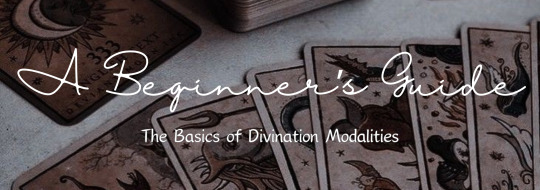
Magicians! Whether you're drawn to tarot cards, crystal balls, or pendulums, there's a divination method out there for everyone. Let's dive into this long post about divination and explore everything you need to know to get started! 🌟
🃏 Tarot Cards:
History: Tarot cards have a rich history dating back to the 15th century, originally used for playing card games. Over time, they evolved into a powerful tool for divination and spiritual insight.
Early Origins: Tarot cards likely originated in the 15th century in Europe, possibly in Italy or France. The earliest known tarot decks were hand-painted luxury items commissioned by wealthy families. These early decks, such as the Visconti-Sforza Tarot and the Tarot de Marseille, were not intended for divination but rather for playing card games similar to modern-day bridges.
Tarot as a Divinatory Tool: By the 18th century, tarot cards began to be used for divination and spiritual purposes. Influential occultists and mystics, such as Antoine Court de Gébelin and Etteilla, popularized the idea that tarot cards held hidden esoteric meanings and could be used for fortune-telling and self-discovery.
The Rider-Waite-Smith Tarot: One of the most iconic and influential tarot decks is the Rider-Waite-Smith Tarot, first published in 1910 by occultist Arthur Edward Waite and artist Pamela Colman Smith. This deck introduced innovative imagery and symbolism, including illustrated scenes on the minor arcana cards, which revolutionized the way tarot was interpreted and understood.
Tarot in Modern Occultism: In the 20th century, tarot experienced a resurgence in popularity within the occult and New Age communities. Influential figures such as Aleister Crowley and Carl Jung explored the psychological and symbolic significance of tarot, further cementing its place as a tool for spiritual insight and personal growth.
Tarot Today: Today, tarot continues to thrive as a popular tool for divination, meditation, and self-reflection. There are countless tarot decks available, ranging from traditional to modern, each with its unique artwork and symbolism. Tarot readers use the cards to explore themes such as love, career, spirituality, and personal development.
💭 Uses: Tarot cards offer guidance, clarity, and introspection. Each card carries its symbolism and meaning, allowing you to tap into your intuition and explore past, present, and future energies.
🃏 Divination: This is perhaps the most well-known use of tarot cards. Divination involves using the cards to gain insight into a specific question or situation. Tarot readers interpret the symbolism and imagery of the cards to provide guidance, clarity, and potential outcomes. Divination readings can focus on various aspects of life, including love, career, relationships, and spiritual growth.
🔍 Self-Reflection and Insight: Tarot cards can serve as powerful tools for self-reflection and introspection. By pulling cards and reflecting on their meanings, individuals can gain insights into their thoughts, emotions, and subconscious mind. Tarot readings can help illuminate patterns, beliefs, and behaviors that may be influencing their lives, allowing for personal growth and transformation.
📖 Decision-Making and Problem-Solving: Tarot cards can be used to help make decisions or solve problems. Individuals can consult the cards for guidance and clarity when faced with a dilemma or uncertainty. Tarot readings can provide different perspectives, highlight potential obstacles or opportunities, and help individuals make more informed choices.
💭 Journaling and Creative Expression: Some people use tarot cards as prompts for journaling or creative expression. They may pull a card each day and write about how its symbolism relates to their experiences, emotions, or goals. Tarot cards can inspire creative projects, artwork, poetry, or storytelling by tapping into the archetypal imagery and themes depicted in the cards.
🙏 Spiritual Development and Meditation: Tarot cards can be incorporated into spiritual practices and meditation routines. Some individuals use tarot cards as focal points for meditation, gazing at the imagery to quiet the mind and deepen their connection to their intuition or spiritual guides. Tarot readings can also be used as part of ritual ceremonies or spiritual rituals to invoke specific energies or intentions.
🌟 Relationship Building and Communication: Tarot cards can be used to build deeper connections and facilitate communication in relationships. Couples or friends may use tarot cards to explore their dynamics, deepen their understanding of each other, and foster open and honest communication. Tarot readings can provide a shared language for discussing feelings, desires, and aspirations.
🧘Manifestation and Goal Setting: Some people use tarot cards as tools for manifestation and goal setting. They may pull cards to clarify their intentions, visualize their desires, and identify action steps to manifest their goals. Tarot readings can help individuals align their thoughts, beliefs, and actions with their desires, empowering them to change their lives positively.
Do's: Trust your intuition, keep an open mind, and approach each reading with respect and reverence.
✅ Set Clear Intentions: Before conducting a tarot reading, take a moment to set clear intentions for the session. Focus on the specific questions or areas of your life you'd like to explore and the guidance you're seeking from the cards.
✅ Cultivate a Sacred Space: Create a sacred and peaceful environment for your tarot readings. Light candles, burn incense or play soft music to enhance the ambiance and set the mood for your practice.
✅ Trust Your Intuition: Tarot readings are as much about intuition as they are about interpretation. Trust your instincts and the messages you receive from the cards. Pay attention to your inner voice and how the cards resonate with your feelings and experiences.
✅ Respect the Cards: Treat your tarot cards with care and respect. Store them in a protective pouch or box when not in use, and avoid handling them with dirty or oily hands. Regularly cleanse and consecrate your cards to maintain their energy and integrity.
✅ Practice Regularly: Like any skill, tarot reading requires practice and dedication. Commit to practicing regularly, even if it's just pulling a daily card or conducting readings for friends and family. The more you work with the cards, the deeper your connection and understanding will become.
✅ Journal Your Readings: Keep a tarot journal to record your readings, interpretations, and insights. Reflect on the messages you receive from the cards and how they resonate with your life. Journaling can help you track your progress, identify patterns, and deepen your understanding of the cards.
✅ Seek Learning and Growth: Tarot is a lifelong journey of learning and exploration. Invest in books, courses, or workshops to deepen your knowledge of tarot symbolism, spreads, and techniques. Surround yourself with a supportive community of fellow tarot enthusiasts to share insights and experiences.
Don'ts: Avoid reading for yourself when in a highly emotional state or seeking answers to overly specific questions. Remember, the cards provide guidance, not concrete predictions.
❌ Don't Read When Emotionally Distressed: Avoid conducting tarot readings when you are feeling highly emotional, anxious, or distressed. Emotions can cloud your judgment and intuition, leading to inaccurate readings or misinterpretations of the cards.
Don't Rely Solely on the Cards: While tarot cards can offer valuable insights and guidance, they should not be seen as infallible or deterministic. Use your judgment, common sense, and critical thinking skills when interpreting the cards and making decisions based on their guidance.
❌ Don't Read for Others Without Permission: Always seek permission before conducting a tarot reading for someone else. Respect their boundaries and privacy, and refrain from prying into sensitive or personal matters without their consent.
Don't Give Unsolicited Advice: Tarot readings are not a substitute for professional advice or therapy. Avoid giving unsolicited advice or making predictions about someone else's future, especially if it could cause harm or distress.
❌ Don't Fear Negative Cards: Every tarot deck contains cards with both positive and challenging symbolism. Don't be afraid of so-called "negative" cards like the Death or Tower card. Instead, embrace them as opportunities for growth, transformation, and new beginnings.
❌ Don't Ignore Your Intuition: If something doesn't feel right during a tarot reading, trust your intuition and proceed with caution. Take breaks when needed, and don't push yourself to continue if you're feeling uncomfortable or overwhelmed.
❌ Don't Become Obsessive: While tarot can be a valuable tool for self-reflection and insight, avoid becoming overly reliant on the cards or obsessed with seeking answers to every question or concern. Balance your tarot practice with other forms of self-care, mindfulness, and spiritual exploration.
🔮Crystal Ball Scrying:
History: Crystal ball scrying dates back to ancient civilizations, including ancient Egypt and Celtic cultures. It involves gazing into a crystal ball to receive visions or insights.
📜 Ancient Roots: The practice of scrying dates back thousands of years and can be found in cultures across the globe. Ancient civilizations such as the Egyptians, Greeks, Romans, and Druids all had forms of divination involving reflective surfaces or natural objects. These practices often involved seeking guidance from spirits, deities, or ancestors through the act of gazing into a reflective medium.
🏛️ Medieval Europe: Crystal ball scrying gained popularity during the Middle Ages in Europe, particularly among alchemists, astrologers, and mystics. It was believed that certain stones, such as quartz crystals, possessed mystical properties and could serve as conduits for receiving divine or spiritual messages. Crystal balls became associated with the concept of the "scrying mirror," a tool for accessing hidden knowledge and insights beyond the physical realm.
⏳ Renaissance and Occult Revival: During the Renaissance and the occult revival of the 19th century, crystal ball scrying experienced a resurgence of interest among mystics, occultists, and spiritual seekers. Influential figures such as John Dee, Edward Kelley, and Aleister Crowley explored the practice of scrying as a means of contacting spirits, exploring the subconscious mind, and gaining occult knowledge.
🌍 Victorian Era and Spiritualism: Crystal ball scrying gained popularity during the Victorian era, particularly within the spiritualist movement. Mediums and psychics used crystal balls as tools for communicating with the spirit world and conducting seances. The crystal ball became synonymous with the image of the "fortune-teller" or "gypsy" depicted in popular culture and folklore.
📚 Modern Practice: Today, crystal ball scrying continues to be practiced by psychics, mediums, and individuals interested in divination and spiritual exploration. While traditional crystal balls made of quartz or glass are still used, practitioners may also use other reflective surfaces such as mirrors, black obsidian, or bowls of water. Crystal ball scrying is often incorporated into rituals, meditation practices, or psychic readings as a means of accessing intuitive insights and guidance.
Uses: Crystal ball scrying is a powerful method for accessing the subconscious mind and receiving intuitive guidance. It can be used for divination, meditation, and spiritual exploration.
🔮 Divination: The primary use of crystal ball scrying is for divination, or gaining insight into past, present, or future events. By gazing into the crystal ball and allowing the mind to relax and enter a meditative state, practitioners may receive intuitive impressions, symbols, or visions that provide guidance, clarity, and understanding. Crystal ball readings can address a wide range of questions or concerns, including love, career, health, and spiritual growth.
💬 Personal Reflection: Crystal ball scrying can be used for personal reflection and introspection. By gazing into the crystal ball and allowing thoughts and images to arise spontaneously, individuals can gain insights into their emotions, beliefs, and subconscious minds. Crystal ball scrying can help individuals explore their innermost thoughts, fears, and desires, leading to greater self-awareness and personal growth.
🙏 Spiritual Exploration: Crystal ball scrying can serve as a tool for spiritual exploration and connection. Some practitioners use the crystal ball to commune with spirit guides, angels, or ancestors, seeking wisdom, guidance, and inspiration from the spiritual realm. Crystal ball scrying can facilitate a deeper connection to one's intuition, higher self, or spiritual allies, fostering a sense of inner peace, alignment, and purpose.
Problem-Solving and Decision-Making: Crystal ball scrying can be used as a tool for problem-solving and decision-making. By focusing on a specific question or dilemma and gazing into the crystal ball, individuals may receive insights, solutions, or alternative perspectives that help them make informed choices or overcome obstacles in their lives. Crystal ball scrying can provide clarity, direction, and confidence when facing difficult decisions or challenges.
💡 Energy Healing: Some practitioners use crystal ball scrying as part of energy healing or therapeutic practices. By incorporating the crystal ball into meditation or visualization, individuals can channel healing energy and intention through the crystal, promoting relaxation, balance, and harmony on physical, emotional, and spiritual levels. Crystal ball scrying can enhance the healing process and support overall well-being and vitality.
🌟 Ritual and Ceremony: Crystal ball scrying can be incorporated into ritual and ceremonial practices as a means of invoking spiritual energies, setting intentions, or communing with the divine. Some traditions use the crystal ball as a focal point for meditation, prayer, or spellcasting, harnessing its reflective properties to amplify intention and manifest desired outcomes. Crystal ball scrying can enhance the sacredness and potency of ritual practices, deepening the practitioner's connection to the divine and the unseen realms.
Do's: Create a sacred space, cleanse your crystal ball before use, and practice relaxation techniques to quiet the mind.
✅ Prepare Your Space: Create a calm and sacred space for your scrying practice. Dim the lights, burn incense or candles, and eliminate distractions to create an environment conducive to relaxation and focus.
✅ Cleanse and Charge Your Crystal Ball: Before each scrying session, cleanse your crystal ball to remove any negative or stagnant energies it may have absorbed. You can cleanse it with smoke (such as herb bundles of cedar, garden sage, or rosemary), sound (using a singing bowl or bell), or by placing it under running water. Once cleansed, charge the crystal ball with your intention or positive energy.
✅ Set Clear Intentions: Clarify your intentions before beginning your scrying session. Think about the questions or areas of your life you'd like to explore and focus your energy and attention on receiving guidance and insights from the crystal ball.
✅ Relax and Clear Your Mind: Relax your body and mind before gazing into the crystal ball. Practice deep breathing or meditation techniques to quiet your thoughts and enter a receptive state of awareness. Release any expectations or preconceived notions, allowing yourself to be open to whatever messages or images may arise.
✅ Trust Your Intuition: Trust your inner guidance and intuition during the scrying process. Pay attention to any impressions, feelings, or images that come to you as you gaze into the crystal ball. Trust that the messages you receive are meaningful and relevant to your journey.
✅ Journal Your Insights: Keep a journal to record your scrying experiences, insights, and interpretations. Writing down your impressions can help you track patterns, themes, and symbols that emerge over time, deepening your understanding of the messages received from the crystal ball.
Don'ts: Avoid forcing visions or expecting immediate results. Patience and practice are key when it comes to crystal ball scrying.
❌ Force the Process: Avoid trying to force or control the scrying process. Allow the images and impressions to arise naturally, without imposing your will or expectations onto the experience. Trust that the messages will come to you in their own time and in their way.
❌ Scry When Emotionally Distressed: Refrain from scrying when you're feeling highly emotional, anxious, or stressed. Strong emotions can cloud your judgment and intuition, making it difficult to receive clear and accurate guidance from the crystal ball.
❌ Obsess Over Negative Images: If you encounter negative or unsettling images during your scrying session, don't dwell on them or become fixated on their meaning. Instead, acknowledge the images and release them with love and compassion. Focus on inviting positive and uplifting energy into your space.
Interpret Too Literally: Avoid interpreting the images or symbols in the crystal ball too literally. Instead, focus on the overall feeling or message conveyed by the imagery. Allow your intuition to guide you in discerning the deeper meaning behind the symbols and their relevance to your life.
❌ Compare Your Experience to Others: Every scrying experience is unique to the individual. Avoid comparing your experience to that of others or seeking validation from external sources. Trust in your insights and interpretations, knowing that you are the ultimate authority on your spiritual journey.
❌ Overuse or Depend Solely on the Crystal Ball: While crystal ball scrying can be a valuable tool for spiritual growth and insight, avoid becoming overly reliant on the crystal ball or using it as a crutch. Balance your scrying practice with other forms of divination, meditation, and self-reflection to maintain a holistic approach to your spiritual development.
⚖️ Pendulum Divination:
History: Pendulum divination has been used for centuries to seek answers and guidance from the subconscious mind. It involves suspending a pendulum over a surface and interpreting its movements.
📜 Ancient Origins: Dowsing, the broader term encompassing pendulum divination, has ancient roots and is believed to have originated independently in different cultures. Archaeological evidence suggests that dowsing tools, such as forked branches or rods, were used by ancient civilizations for locating water sources, minerals, and other hidden resources. Dowsing was often practiced by individuals known as "water witches" or "diviners" who possessed a special sensitivity to subtle energies or vibrations in the earth.
🏛️ Historical References: References to dowsing can be found in historical texts and records dating back thousands of years. For example, ancient Egyptian texts describe the use of dowsing rods for finding water and minerals, while ancient Chinese texts mention the use of divining rods for locating underground sources of water. Dowsing was also practiced by European cultures during the Middle Ages and Renaissance periods, where it was used for everything from locating buried treasure to identifying witches.
⏳ Renaissance and Enlightenment: During the Renaissance and Enlightenment periods, dowsing experienced a resurgence of interest and popularity among scholars, scientists, and natural philosophers. Figures such as Leonardo da Vinci, Sir Isaac Newton, and Paracelsus explored the phenomenon of dowsing and its potential applications in various fields. Dowsing was studied alongside other forms of natural philosophy and was often associated with concepts of magnetism, subtle energies, and the human psyche.
🌍 19th Century and Spiritualism: In the 19th century, dowsing became closely associated with the spiritualist movement, which emphasized communication with the spirit world and exploration of psychic phenomena. Mediums and psychics used pendulums as tools for divination, communication with spirits, and accessing intuitive insights. Pendulum divination was integrated into seances, spiritual healing practices, and other spiritualist rituals as a means of receiving guidance and validation from the unseen realms.
📚 Modern Practice: Today, pendulum divination remains a popular and widely practiced form of divination, utilized by people of various spiritual and cultural backgrounds. Pendulums come in a variety of shapes, sizes, and materials, including metal, wood, and crystal. Practitioners use pendulums for a wide range of purposes, including divination, decision-making, energy healing, and spiritual exploration. Pendulum divination is often integrated into holistic healing modalities such as Reiki, chakra balancing, and aura cleansing, as well as used in conjunction with other forms of divination such as tarot cards or astrology.
Uses: Pendulums can be used for yes/no questions, dowsing, and accessing intuitive knowledge. They are versatile tools for divination and spiritual exploration.
⚖️ Answering Questions: One of the primary uses of pendulum divination is to seek answers to questions. By asking yes/no questions and observing the movement of the pendulum, practitioners can receive guidance and insight into various aspects of their lives, including relationships, careers, health, and spiritual matters. Pendulum divination can provide clarity and direction when faced with difficult decisions or uncertainties.
🕰️ Decision-Making: Pendulum divination can be a helpful tool for making decisions. Practitioners can use the pendulum to weigh different options, evaluate potential outcomes, and determine the best course of action. By tuning into their intuition and allowing the pendulum to guide them, individuals can make more informed choices that align with their highest good.
💫 Problem-Solving: Pendulum divination can assist in problem-solving and troubleshooting. By focusing on a specific issue or challenge and asking targeted questions, practitioners can uncover underlying causes, identify solutions, and overcome obstacles more effectively. Pendulum divination can reveal hidden insights and perspectives that may not be immediately apparent, leading to creative solutions and breakthroughs.
🌀 Aura and Energy Work: Pendulum divination can be incorporated into energy healing and aura work. Practitioners can use the pendulum to detect and assess subtle energy patterns, blockages, or imbalances within the body's energy field. By observing the movement of the pendulum, individuals can identify areas of tension or stagnation and channel healing energy to restore balance and harmony on physical, emotional, and spiritual levels.
🌈 Personal Growth and Self-Discovery: Pendulum divination can serve as a tool for personal growth and self-discovery. By asking questions related to inner thoughts, emotions, and beliefs, individuals can gain insight into their subconscious mind and explore areas of self-improvement and healing. Pendulum divination can help individuals uncover limiting beliefs, release emotional blocks, and cultivate greater self-awareness and empowerment.
🌟Spiritual Exploration: Pendulum divination can be used for spiritual exploration and connection. Practitioners can use the pendulum to communicate with spirit guides, angels, or higher consciousness, seeking guidance, wisdom, and support from the spiritual realms. Pendulum divination can deepen one's connection to the divine and facilitate a greater sense of trust, faith, and alignment with universal energies.
Do's: Establish clear communication with your pendulum, ask concise questions, and trust the answers you receive.
✅ Set Clear Intentions: Before beginning a pendulum divination session, take a moment to set clear intentions for the process. Clarify the questions or areas of your life you'd like to explore and the guidance you're seeking from the pendulum. Focus your energy and attention on receiving clear and accurate answers.
✅ Choose a Suitable Pendulum: Select a pendulum that resonates with you energetically and feels comfortable to use. Pendulums come in various shapes, sizes, and materials, so choose one that feels intuitively right for you. You may also choose to cleanse and consecrate your pendulum before using it to remove any previous energies and imbue it with your intention.
✅ Establish Clear Communication: Before beginning your divination session, establish clear communication with your pendulum. Hold the pendulum in your hand and ask it to show you a clear and accurate response for "yes" and "no" movements. Observe how the pendulum responds to different questions and affirmations, trusting the movements as indications of intuitive guidance.
✅ Practice Grounding and Centering: Ground and center yourself before engaging in pendulum divination. Take a few deep breaths, visualize roots extending from your body into the earth, and imagine yourself surrounded by a protective bubble of light. Grounding helps to stabilize your energy and enhance your connection to the pendulum and your intuition.
✅ Trust Your Intuition: Trust your inner guidance and intuition throughout the pendulum divination process. Pay attention to any intuitive impressions, feelings, or insights that arise as you work with the pendulum. Trust that the messages you receive are meaningful and relevant to your situation, even if they may not always align with your expectations.
✅ Maintain Respect and Ethical Conduct: Treat the pendulum with respect and reverence as a sacred tool for divination. Approach the process with sincerity, honesty, and integrity, refraining from asking frivolous or inappropriate questions. Avoid using pendulum divination to manipulate or control others or to pry into sensitive or private matters without their consent.
Don'ts: Avoid relying solely on the pendulum for major life decisions or asking questions that are too vague or ambiguous.
❌ Don't Engage When Emotionally Distressed: Avoid engaging in pendulum divination when you're feeling highly emotional, anxious, or stressed. Strong emotions can cloud your judgment and intuition, leading to inaccurate or unreliable readings. Wait until you're in a calm and centered state before using the pendulum for divination.
❌ Don't Rely Solely on the Pendulum: While the pendulum can be a valuable tool for accessing intuitive guidance, avoid becoming overly reliant on it or using it as a substitute for your inner wisdom. Use the pendulum as a complementary tool alongside your intuition, critical thinking skills, and common sense when making decisions or seeking guidance.
❌ Don't Forget to Ground and Close: After completing a pendulum divination session, remember to ground yourself and close your energy. Thank the pendulum for its guidance and assistance, and express gratitude for the insights received. Release any residual energy or attachments and return to a grounded state of awareness before continuing with your day.
❌ Don't Obsess Over Negative Outcomes: If you receive a negative or unsettling response from the pendulum, don't dwell on it or become overly fixated on the outcome. Remember that pendulum divination is a tool for guidance and insight, not a predictor of fixed outcomes. Trust that the messages you receive are meant to serve your highest good and empower you to make informed choices.
❌ Don't Compare Your Results to Others: Every individual's experience with pendulum divination is unique. Avoid comparing your results or interpretations to those of others, as each person's energy, intuition, and circumstances are different. Trust in your intuition and interpretation of the pendulum's movements, knowing that you are the ultimate authority on your spiritual journey.
There are other modalities that I haven't covered in depth. Let's touch a bit on each of these main ones:
Scrying: Scrying is a broad term encompassing various divinatory practices involving gazing into reflective surfaces or mediums to receive insights or visions. In addition to crystal ball scrying, other forms of scrying include using mirrors, water, fire, smoke, or black mirrors to access intuitive guidance and symbolic imagery. I touched on specifically crystal ball scrying, but there are many other types of scrying to fit your needs, the basics are mostly the same.
Astrology: Astrology is the study of celestial bodies' positions and movements to interpret their influence on human affairs and natural phenomena. Astrologers use birth charts, horoscopes, and planetary alignments to provide insights into personality traits, life events, and compatibility.
Numerology: Numerology is the study of numbers and their symbolic meanings. Numerologists analyze numbers associated with names, birthdates, and events to uncover insights into personality, life paths, and potential outcomes. Numerology can involve calculations such as life path numbers, destiny numbers, and personal year cycles.
Palmistry: Palmistry is the practice of reading the lines, shapes, and markings on the palms of the hands to gain insight into personality traits, life events, and potential future outcomes. Palmists examine features such as palm lines (e.g., heart line, head line), mounts, and finger shapes to provide interpretations.
Runes: Runes are ancient symbols used in divination, originating from Germanic and Norse cultures. Runecasters typically use sets of carved stones or wooden tiles inscribed with runic symbols. By casting or drawing runes and interpreting their positions and meanings, practitioners can gain insights into various aspects of life and decision-making.
Tea Leaf Reading (Tasseography): Tasseography is the practice of interpreting patterns and symbols formed by tea leaves at the bottom of a cup or vessel. Practitioners observe the shapes, lines, and arrangements of the tea leaves to provide insights into future events, emotions, and outcomes.
Cartomancy: Cartomancy is the practice of using regular playing cards or specialized decks (other than tarot cards) for divination purposes. Practitioners interpret the suits, numbers, and symbols on the cards to provide insights into past, present, or future events and circumstances.
Dream Interpretation: Dream interpretation involves analyzing the symbols, themes, and emotions present in dreams to gain insights into the dreamer's subconscious mind and waking life. Dream interpreters use various techniques and frameworks to interpret dreams and uncover their meanings and messages.
I primarily use tarot and pendulum divination as well as black mirror scrying, however, the basic understanding of many types of divination can allow you to become a well-rounded practitioner.
#queue the magick#witch#witchcraft#witchblr#magickkate#reference#witchy#divination#types of divination#tarotblr#tarot reading#pendulum#scrying#witch aesthetic#witchy vibes#witches#beginner witch#witch tips#witchcraft 101#witchcraft community#witchyvibes#witchy shit#witches of tumblr#witchcore#witch community#witch blog#witchtok
133 notes
·
View notes
Text
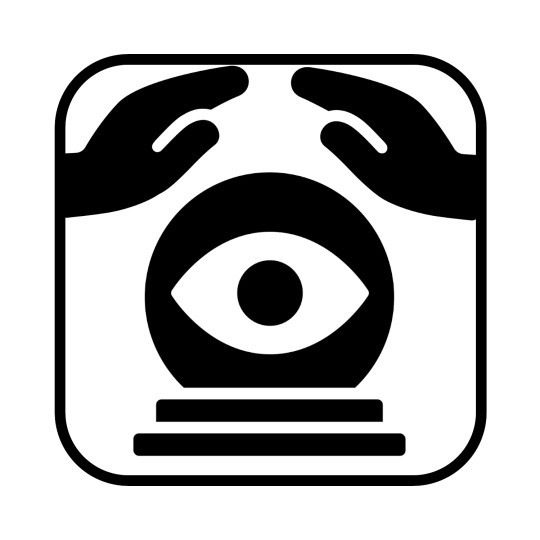
ITEM FILE #7511
ITEM: "Screye"
ITEM HISTORY: Screye, developed by Esoteritech, is a mobile app that debuted in 2009. The app sought to emulate the functions of the centuries-old magical technology of scrying, or using a reflective surface to view and hear remote events, future happenings, or conversational partners. Though similar feats had been attempted and moderately successful in the 1980s using cathode ray televisions (known as "analog augury"), Screye was the first mass-market scrying program to achieve widespread success. Using the magical programming language Wand+, Screye automates the sometimes-laborious procedures of "dialing in" a scrying connection.
In order to comply with normality-compliance secrecy regulations, Screye is not available on standard app delivery mechanisms. In order to use Screye, users must perform an operation on commercial smartphone devices colloquially known as a "magebreak," modifying the device's operating system to accept a new app delivery mechanism known as Wizapp. Though controversial at the time, magebreaking commercial smartphones is now fairly standard practice among extranormal users, and is the only way to access common extranormal programs such as Screye, the dating app ASMO, and moon-tracking app PhaseTracker.
Screye is extremely widely used in many professional and casual circles, being considered almost ubiquitous. It allows any user with an account on the service to contact any other user with the app, as well as some functionality to contact more traditional scrying tools such as mirrors, crystal balls, and the aforementioned cathode ray tube televisions. To comply with chronological integrity guidelines, it has no divination functionality - though there are reports of Screye "glitching" and showing users glimpses of potential future events.
148 notes
·
View notes
Text
witchcraft things
that didn't work for me
and why
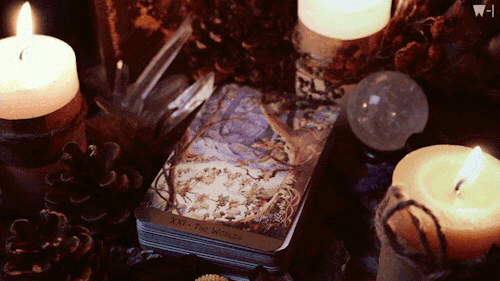
- kitchen witchcraft
i love cooking and i love working with plants, however incorporating spells into my food didn't work for me. i got way too distracted by the spell part, that i completely forgot to make the food taste good. and as much as i love magic, it took the fun out of cooking for me. because now, cooking wasn't something fun where i could experiment with flavors and textures, it was something i had to put thought into beforehand. and i like to be spontaneous with my cooking.
- protection spells
protection spells seem to be the most important part of the witchcraft community. and i do think it's important to know how protection magic works, but it's also very unnecessary to have protections up 24/7 if you're not famous or have many enemies. i tend to forget about my protection spells, so they just sit on my altar, untouched for months and i forget to make new ones. hasn't hurt me so far tho, so i'll be saving those up for when and if i actually need them.
- casting a circle
not gonna lie, i tried that once and never again. it felt so pretentious to me.. like i was in Chilling Adventures of Sabrina. and not in a good way. i stumbled across that practice on witchtok first, that was when i thought i was wrong for practicing my way and not how other people said i should. i don't think casting a circle is a bad thing to do, but it absolutely is a bad thing to do for me.
- bowl spells
bowl spells are one of my favorite kinds of spells because they're interactive. you put things in, you take things out. the energy doesn't feel stagnant and the spell is always working it's magic as long as you interact with it. ....but unfortunately my adhd made it very clear to me that those kinds of spells aren't something that works for me. i forget about them 5 minutes after i made them and they never get interacted with, so they don't do much of what they're supposed to. i would definitely recommend them to people who remember to take out and put in stuff tho, because the concept is great.
- scrying
gods, did i want that to work. divination is my favorite kind of witchcraft and i'm great at it! so when i learned about scrying, it was something i immediately got interested in and tried. i tried fire and water. fire worked a bit better, because the flames are dancing and water is reflective. that meant for me, i was always seeing things in it that were physically there, and couldn't concentrate on the scrying part. honestly i don't really remember why the fire method didn't work out, but i assume i got distracted really fast or lost in my thoughts.
- veiling
veiling can be done for many reasons. mine was, that i wanted to use it as a way to protect myself from all the different types of energy in public places. every person has their own life, with their own problems and their own current state of being. and since i have social anxiety, i thought veiling would be worth a try so that public places perhaps wouldn't get overwhelming as fast. well, that backfired because before i could try it, i realized i was trans and the head covering made me feel very dysphoric when i put it on at home. i never attempted anything similar again after that.
- ancestor work
i lost someone really close to me in early 2020. she wasn't a blood relative, but she was my dad's best friend, our landlord (who lived in the same house as we did by the way) and she saw me grow up since i was a baby. i was so desperate to try and talk to her. i tried to reach her myself, i asked other witches for help, but it never worked. after a while i decided to let her be, because the constant getting my hopes up and then being disappointed didn't help my mental health. i just wanted to know if she was okay now, but i think i just have to trust that she is. as for my other ancestors, i don't know anything about them and i am not really interested in finding out. i wasn't close with any of my great grandparents because we saw each other about once a year until they died. they didn't do anything wrong, but i don't want to force a connection.
- dragon work
damn. i really love dragons. all my life and with all my heart. and i truly believe that they are out there (not physically, like dinosaurs were, but in a similar way the gods are out there). i've done a lot of research on the topic, but my mental health got in the way. i don't have the concentration to reach out to them, nor will i be able to dedicate a specific amount of time to them regularly, which i feel like they won't like. i will try again when and if i get better, but until then it goes on this list of witchcraft things that didn't work for me and why.
#witchcraft#witchblr#witch#witches of tumblr#norse pagan witch#pagan witch#witch community#witchcraft community#witchcraft 101#witch tips#beginner witch tips#beginner witch#baby witch tips#baby witch#kitchen witchcraft#dragon work#scrying#spells#witchcraft spells
618 notes
·
View notes
Text

Did you forget about Mombi?
Don't forget about supporting my comics on Patreon! (link in bio)
194 notes
·
View notes
Text

Handfulsofdust
#witchblr#witches of tumblr#witchcraft#wicca#pagan#witchy things#witchy#magick#green witch#baby witch#green witchcraft#witch community#candle magick#candle magic#cauldron#scrying#herb magic#herbal magick#herb magick#herbal magic#green magic#green magick
746 notes
·
View notes
Text

happy wizard wednesday i've been in the balloon
8K notes
·
View notes
Text

#witch#witchcraft#altar#hekate#artemis#personal#hellenic witchcraft#witchblr#ceremonial witchcraft#eclectic witch#scrying#witches#witches of tumblr
726 notes
·
View notes
Text
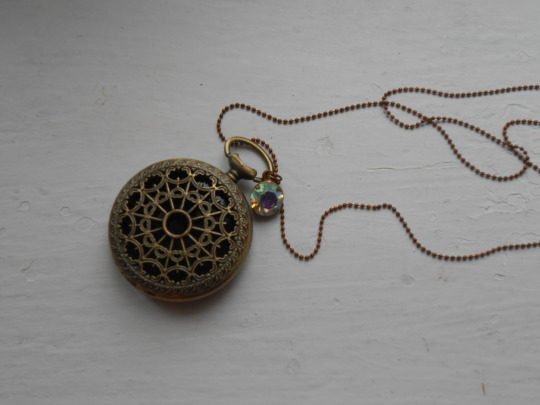

I made a scrying mirror pocketwatch pendant!
#scrying mirror#scrying#witch#witch project#witchy#witch aesthetic#witchcraft#magic#spells#black mirror#art#my art#jewelry
709 notes
·
View notes
Text
A wizard that uses a frying pan with a really long handle for their wizard staff. Extremely utilitarian, there’s frying food, there’s also using the pan for remote viewing (good old fashioned Scrying Pan), it also makes for decent potion brewing even if it’s more shallow than a cauldron, plus other stuff.
But most importantly, there’s always good old fashioned smacking a dude in the face with a frying pan.
#wizard#wizardposting#wizard shit#wizardblogging#wizardblr#d&d#dnd#magic items#make up a guy#character idea#cast iron#cooking#scrying
282 notes
·
View notes
Text
Divination magick
Divination is the practice of seeking insight, guidance, or knowledge about the future or unknown through supernatural or intuitive means. It is an ancient and widespread practice found in various cultures and spiritual traditions throughout history. Divination can be approached in different ways, using various tools, techniques, or intuitive abilities.
Here are some common forms of divination:
Tarot Reading: Tarot cards are a popular tool for divination. A tarot deck consists of 78 cards with symbolic images that are interpreted to provide guidance and insight into different aspects of life, including relationships, career, and spiritual growth.
Astrology: Astrology involves studying the positions and movements of celestial bodies to interpret their influence on individuals and events. It is based on the belief that celestial bodies can provide insights into personality traits, life events, and future possibilities.
Runes: Runes are ancient symbols or letters carved on stones or pieces of wood. They are used in divination to receive guidance and answers to specific questions. The runes are typically drawn or cast, and their meanings are interpreted based on their position and the intuitive insights they evoke.
Scrying: Scrying is a practice of gazing into a reflective surface, such as a crystal ball, mirror, or water, to induce a state of altered consciousness and receive visions or symbolic messages. The interpretation of what is seen relies on the practitioner's intuitive abilities.
Pendulum Divination: Pendulum divination involves suspending a weighted object, such as a crystal or metal pendant, and asking yes or no questions. The movement or direction of the pendulum is interpreted as a response from the spiritual realm.
Numerology: Numerology is the study of the symbolic meanings of numbers and their influence on human life. It involves calculating and interpreting numbers associated with names, birthdates, or events to gain insight into personality traits, life cycles, and potential outcomes.
Palmistry: Palmistry, also known as chiromancy, involves analyzing the lines, shapes, and features of the palm to interpret personality traits, character, and potential life events. Different areas of the hand are associated with different aspects of life, such as love, career, and health.
Tea Leaf Reading: Tea leaf reading, or tasseography, is a form of divination in which patterns and symbols formed by tea leaves in a cup are interpreted to gain insight into the future or receive guidance. The reader interprets the symbols and images left by the tea leaves.
It is important to approach divination with an open mind and understanding that it does not provide absolute predictions but offers guidance, possibilities, and insights into the energies and influences surrounding a situation or person. The effectiveness of divination depends on the skill, intuition, and connection of the practitioner with the chosen tool or technique.
#divination#Divination magick#witchblr#witchcore#witchcraft#witchlife#white witch#beginner witch#witch tips#grimoire#spirituality#book of shadows#tarot#tarot reading#astrology#runes#scrying#pendulum divination#numberology#palmistry#tea leaf reading
207 notes
·
View notes